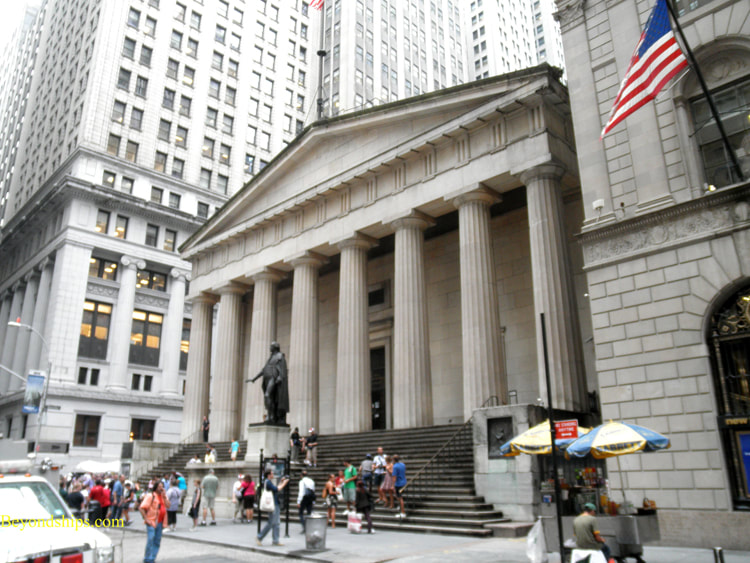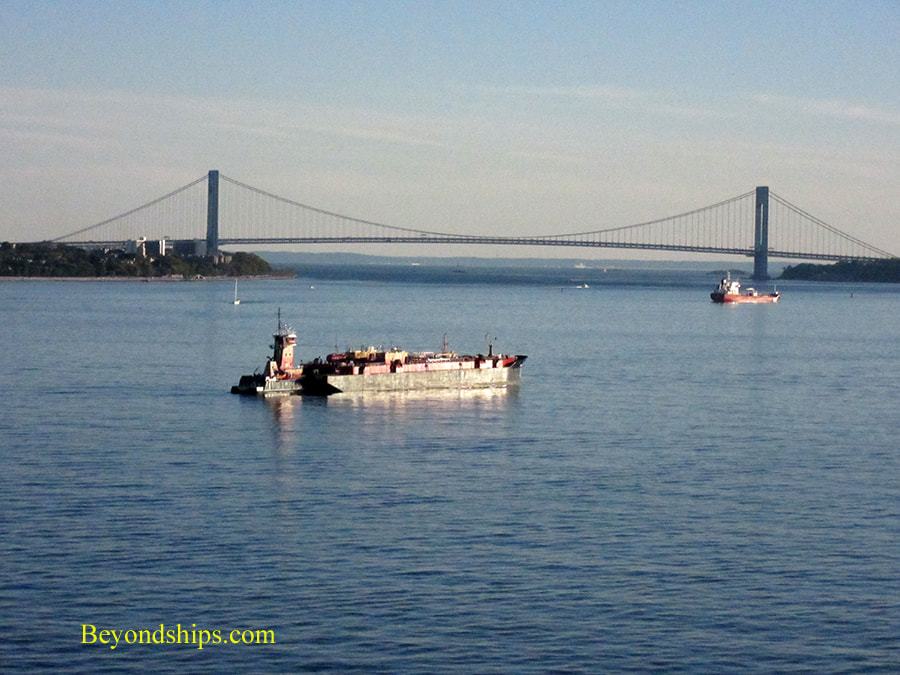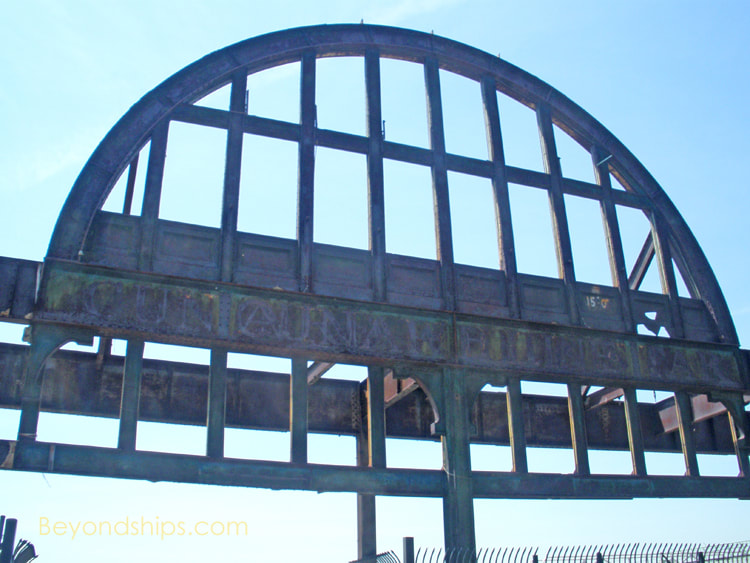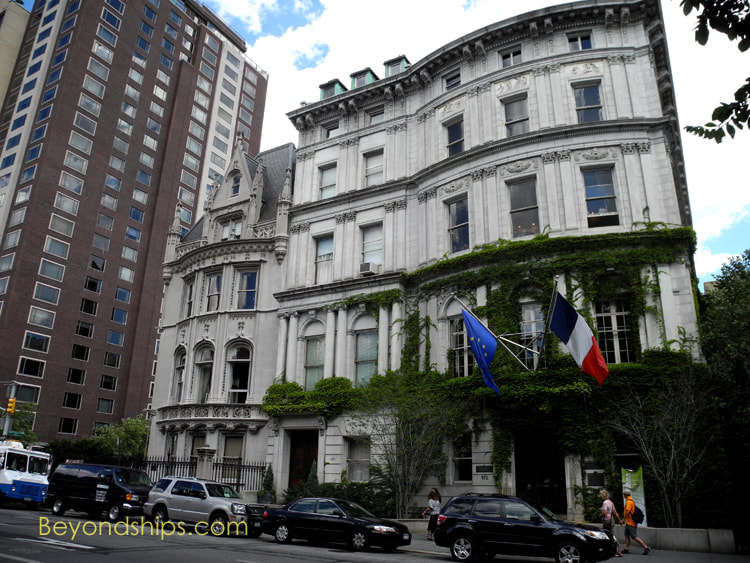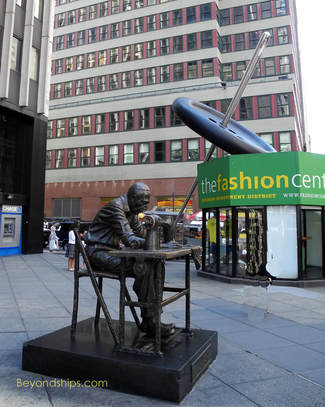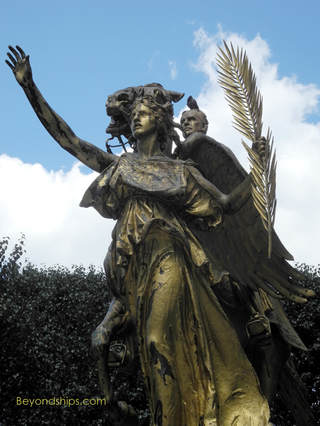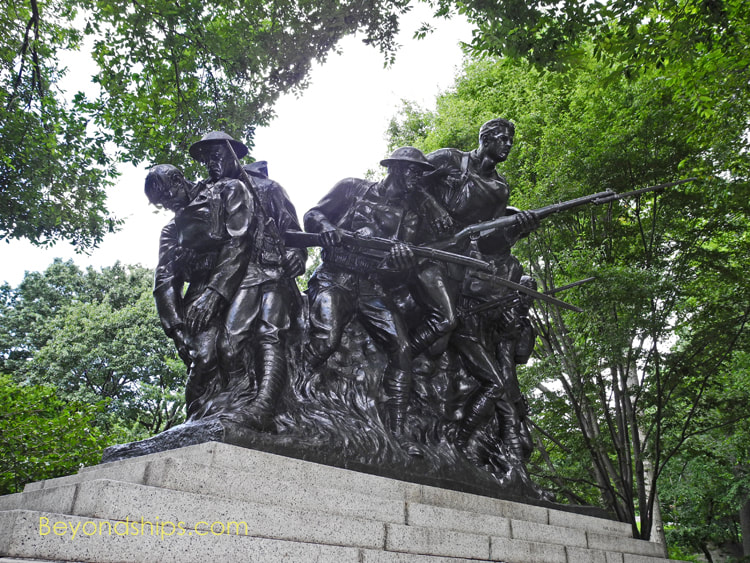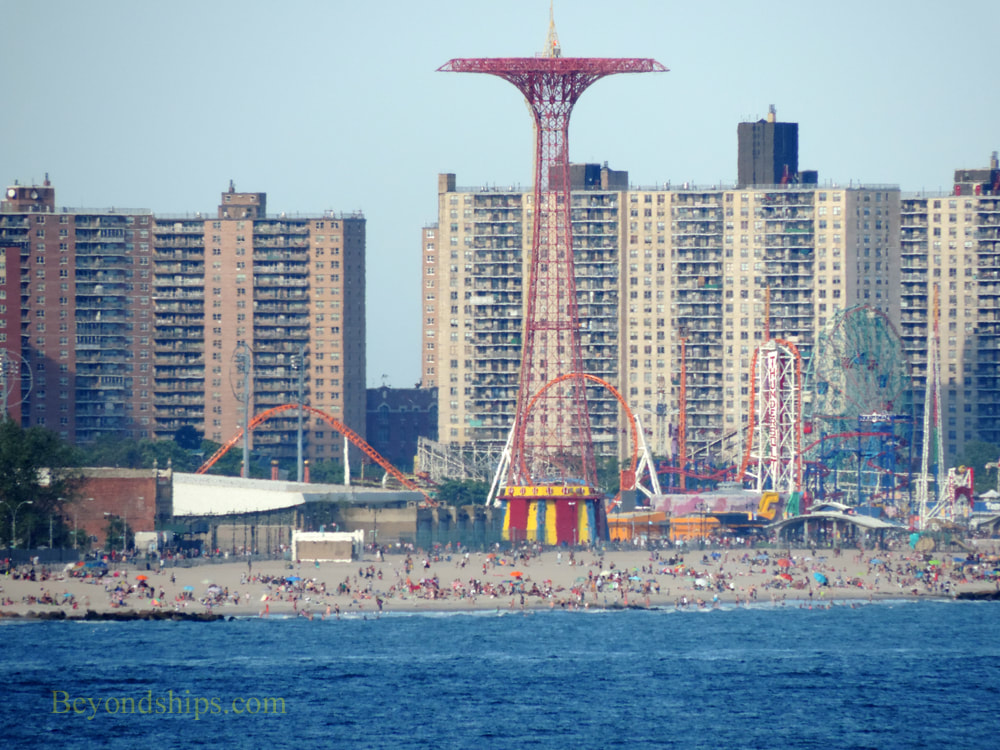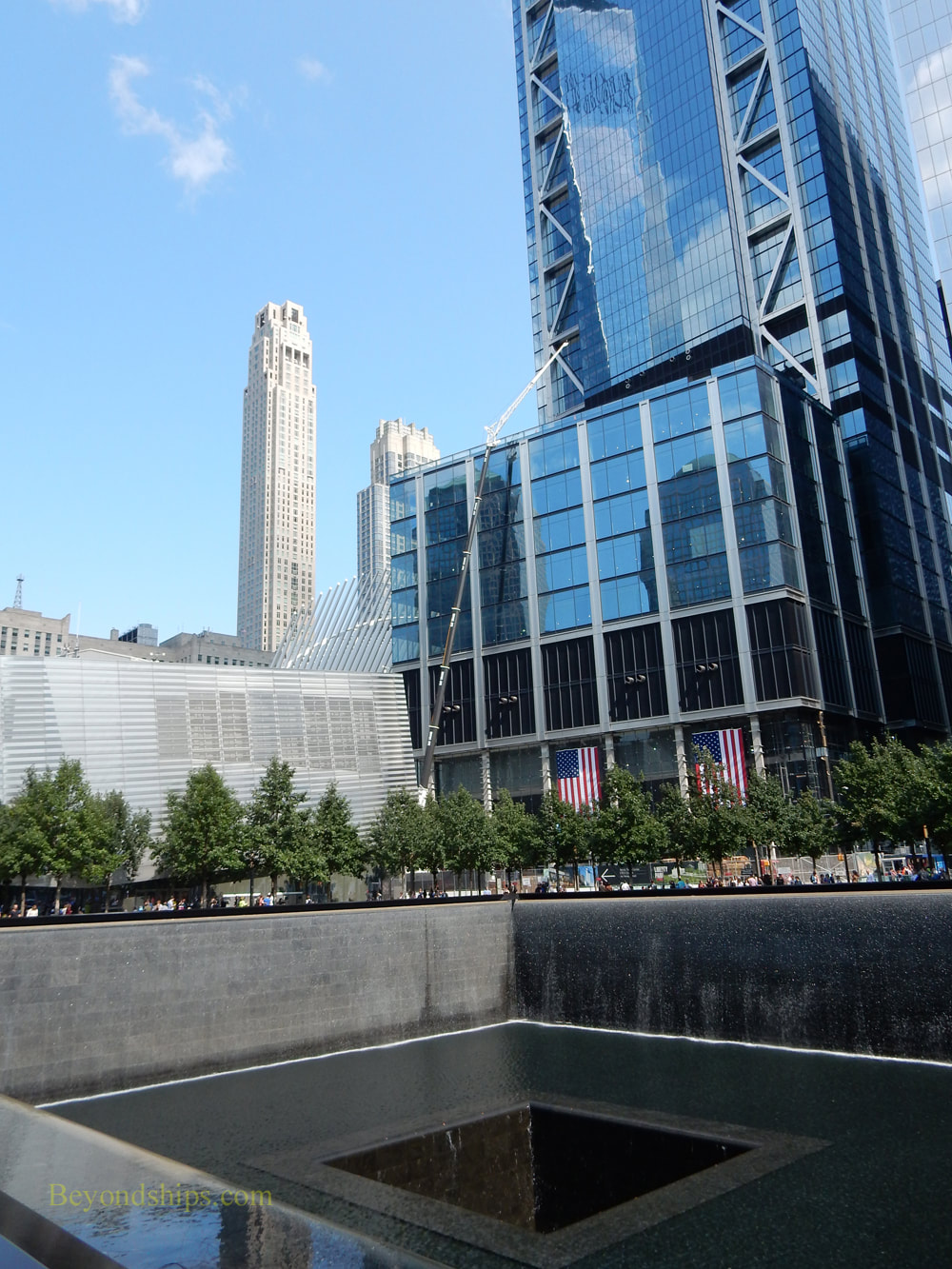|
The first ship to visit New York Harbor was the French ship La Dauphine commanded by Italian explorer Giovanni da Verrazano in 1524. He found the area inhabited by members of the Algonquin nation of Native Americans who used the waterways for hunting and fishing and who engaged in farming.
In 1609, Englishman Henry Hudson, sailing in the ship Half Moon on behalf of the Dutch East India Company, arrived in the harbor. He hoped that the river that now bears his name would lead him to China. After finding out that it does not go there, he left but noted that the area was rich in beavers. Since beaver pelts were highly valued in Europe, the Dutch established a trading post on Manhattan in 1613 followed by a settlement in 1625, which came to be called Nieuw Amsterdam. The story goes that the Dutch bought Manhattan from the Native Americans for $24 worth of beads and trinkets in what has been termed the greatest real estate deal in history. Some historians, however, argue that the tribe that sold it to the Dutch was probably not the tribe that owned it. In 1664, the British Royal Navy arrived in the harbor and took possession of the Nieuw Amsterdam colony, which they renamed New York after the Duke of York (later James II) who was then Lord High Admiral. The colony grew and prospered largely because of the fine harbor. However, tension grew between the colonists and the British government following the end of the French and Indian War. The colonists, who were unrepresented in Parliament, resented the government’s imposition of taxes as an imposition on their freedom. The Stamp Act Congress, the first organized resistance, was held in New York in 1765. Recognizing that the British would probably attempt to capture New York City after their defeat in Boston, George Washington brought the Continental Army south to defend New York. The British arrived with the largest armada yet seen and defeated Washington in a series of engagements, most notably the Battle of Long Island. New York remained occupied throughout the rest of the Revolutionary War. After the war, the national congress met in New York in 1785 under the Articles of Confederation. When the United States Constitution was adopted, New York became the first capital of the United States. It remained the capital until 1790. In 1806, Robert Fulton inaugurated the first commercially successful steamboat, which carried passengers between New York City and Albany, New York. New York continued to prosper, especially after the opening of the Erie Canal, which connected the city to the Great Lakes and the interior of the country. Agricultural products arrived from the west for transshipment and immigrants traveling to the west landed in the city. The Irish Potato Famine of 1848 led to a great wave of Irish immigrants, many of whom settled in New York. New York was torn by the American Civil War. Merchants had commercial ties to the South and the poorer classes were concerned that once freed, the former slaves would take all the low-paying jobs. These feelings erupted in the bloody Draft Riots of 1863. At the same time, many New Yorkers strongly supported the Union and New York City regiments fought in some of the war's most grueling battles. During the second half of the 19th Century, the city continued to grow as more waves of immigrants arrived. At the same time, city politics became notoriously corrupt under Tammany Hall. Among those who got their start campaigning against this corruption was future President Theodore Roosevelt, who was a native New Yorker. The city's appearance began to change in these years. Early skyscrapers such as the Flat Iron Building and the later Woolworth Building were constructed. Saint Patrick's Cathedral and the Brooklyn Bridge arrived on the scene. Central Park was sculpted. Until the last years of the 19th Century, New York City had been limited to Manhattan. Areas of the mainland north of Manhattan Island (i.e. the Bronx) were annexed by New York in 1974 and 1895. In 1898, a large area of western Long Island became the Borough of Queens, and Brooklyn, which had been a large independent city, became part of New York City. Similarly, the existing towns and municipalities on Staten Island were abolished and that island was consolidated into New York City. During World War I, New York was an important transshipment point for soldiers and supplies going to Europe. German agents attempted to disrupt these shipments by setting off a mammoth explosion in the harbor which completely obliterated Black Tom Island. Following the war, New York took part in the frenzy of the jazz age as chronicled in the writings of authors such as F. Scott Fitzgerald. George Gershwin was composing Rhapsody in Blue, Broadway was in its heyday and uptown, the Harlem Renaissance was taking place. The Wall Street Crash of 1929 ended the frenzy. Despite the Great Depression that followed, the 1930s saw the creation of some of the city's greatest buildings including the Empire State Building. Meanwhile, the great ocean liners such as the Normandie and the Queen Mary were sailing regularly from New York. New York again played an important role in World War II. Many of America's aircraft carriers and its last great battleships were built at the Brooklyn Navy Yard. In the years following the war, the city once again saw an economic boom. It also became the site of the headquarters of the United Nations and the homeport for the world's fastest passenger ship, the SS United States. By the 1970s, the situation began to change for the worse. The crime rate had risen and businesses were fleeing the city. A financial crisis led to cutbacks in police and city services, which caused more businesses to leave. The city became widely-regarded as un-governable. In the late 1980s, the economic climate began to improve. Rudolph Giuliani was elected mayor, pressing quality of life issues and engaging in a tough anti-crime campaign. Although these measures were controversial at the time, the character of the City changed radically. The revival of New York sustained a blow on September 11, 2001, when terrorists attacked the World Trade Center, killing nearly 3,000 people. New York has shown its resilience, however, and the city is has recovered. It is visited by millions each year, many of whom come via cruise ship. |
New York has been historically and still is a major
seaport. Most of the cargo traffic, however, has moved to the New Jersey side of the harbor. The vestiges of Manhattan's maritime past have for the most part either been converted to other uses or have been neglected. Above: A tug pushes a barge across the harbor. The Verrazano Narrows Bridge at the entrance to the harbor stands in the background. Below: The remains of a Hudson River pier once used by the Cunard liners such as Lusitania. New York has been and still is the home of many
socio-economic groups. Above: Some of the remaining mansions of the 19th Century millionaires who lived along Fifth Avenue. They have now been converted to other uses. Below: A monument honoring the immigrants who worked in the city's Garment District. New York has played a significant role in the nation's
wars, up to and including acting as a battleground. Its greatest contribution, however, has been its men and women who fought in those wars. There are statues around the city paying tribute to generals (e.g., William Tecumseh Sherman by Augustus Saint-Gaudens, above. At the end of his life, Sherman lived in New York City and died there in 1891) and to common soldiers (e.g., the 107th Regiment Memorial, below, which was designed by Karl Illava, a former sergeant in the 107th, a New York National Guard regiment). Above: A Brooklyn landmark - - the Coney Island Parachute Jump was a popular amusement park ride in the 1940s.
Below: The National September 11 memorial. |
|
|
|
Cruise port New York - brief history
